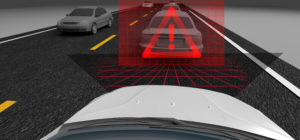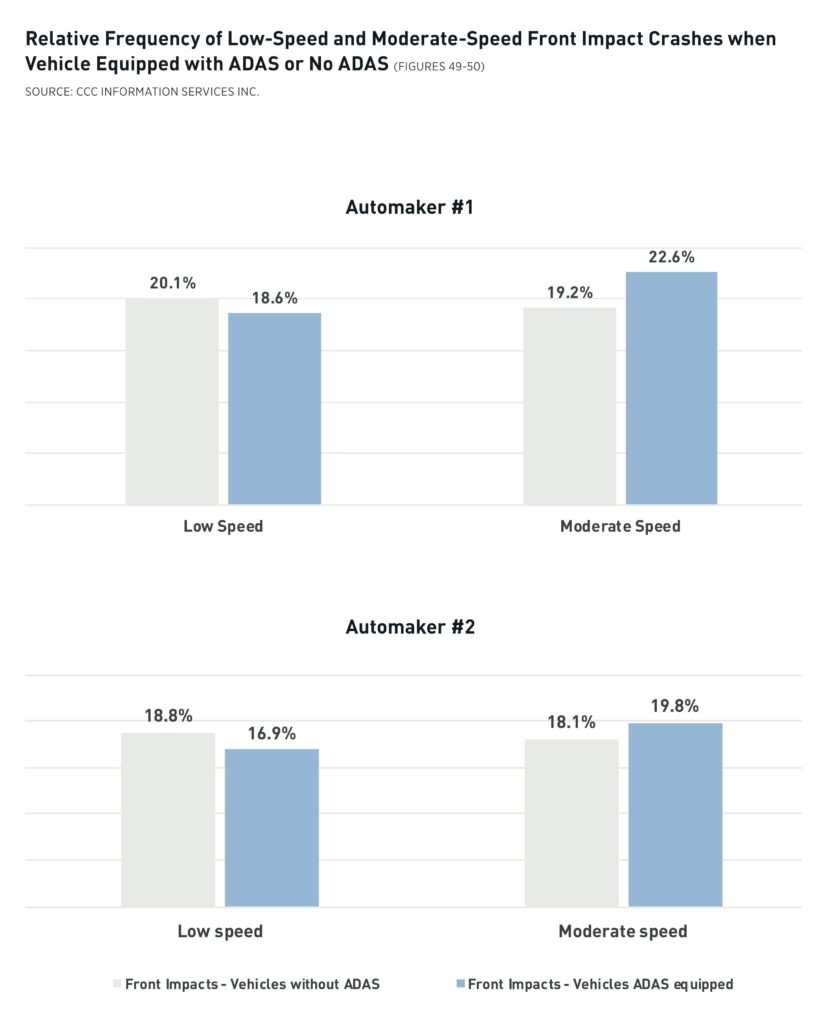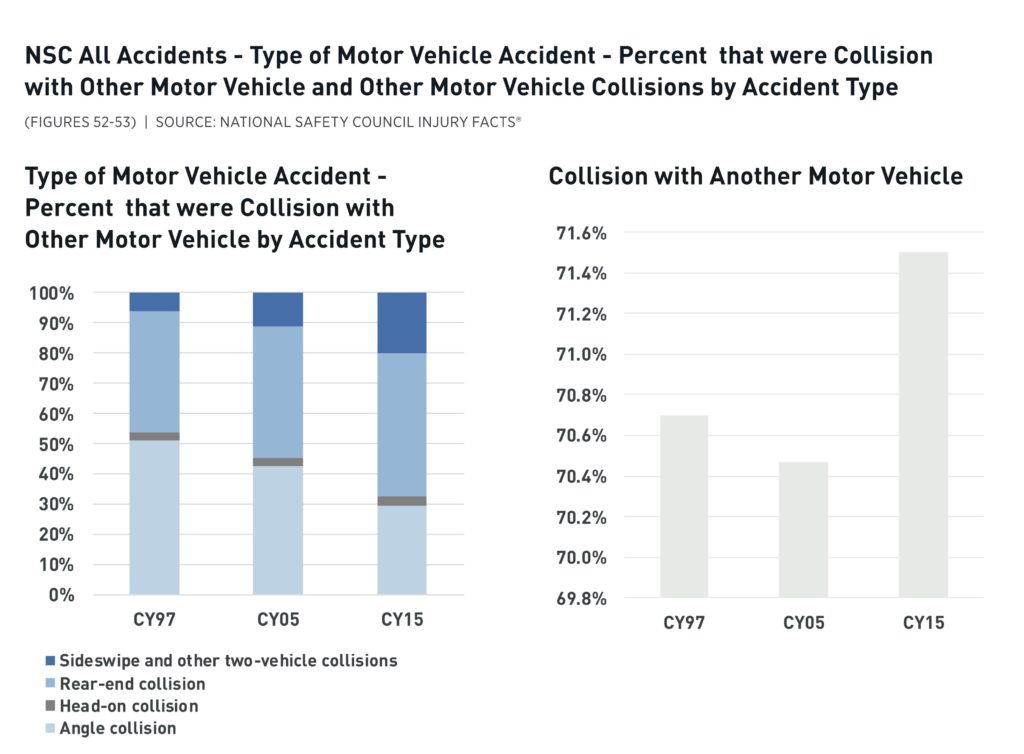
CCC ‘delta-V’ research shows ADAS potential to cut low-, high-speed crashes
By onEducation | Market Trends | Technology
CCC last year reported research finding that the actual cost to repair ADAS-equipped vehicles could be less than that of counterparts without the technology under certain crash circumstances.
The theory was that the advanced driver assistance systems were able to mitigate the crash severity even when they weren’t able to prevent a collision altogether. The reduced intensity of the crash was enough to offset the additional cost of replacing and recalibrating the technology — so long as the crash was one the ADAS could prevent. (Autobraking protecting against frontal collisions is less help when someone rear-ends your car — something CCC’s data bore out.)
In this year’s free “Crash Course,” CCC attacked the topic from a different angle. It used its own “proprietary methodology” to calculate change in velocity in claims regarding pools of two OEMs’ 2016-18 vehicles, one set sporting ADAS, one set without it.
Velocity change, known as “delta-V,” is an important measurement of how bad a crash is. Going from 80 mph to 0 mph because you hit a boulder that fell on the freeway carries a high delta-V. Dropping from 2 mph to 0 mph because you nudged your garage wall delivers a low delta-V.
“The ADAS equipped vehicles with a front impact for both automakers show a smaller share of volume within both the lowest and highest Delta-V ranges, suggesting ADAS may be helping prevent low speed crashes altogether, and slowing the speed of the vehicle prior to impact for those crashes that otherwise might have had higher Delta-V’s,” CCC wrote.
The number of moderate-speed collisions rose for the ADAS-equipped vehicles. CCC director, analyst and lead “Crash Course” author Susana Gotsch explained that higher-speed collisions were likely being mitigated down to the moderate-speed category.
“Once you get above a midrange, a lot of those end up being totals,” Gotsch also noted in an interview.

The findings suggest an interesting ramification for shop business mixes if they’re indeed applicable to the rest of a fleet guaranteed to grow in ADAS.
Autobraking will be standard by 2022, and some OEMs are bundling other ADAS features in with it to offer consumers an entire safety suite standard. (For example, all trims on the 2020 Ford Escape announced Tuesday will come with “Co-Pilot 360,” which has not just autobraking but also features like lane-keeping.)
Fewer low-speed crashes and more moderate-speed work in the industry could have an impact on shop needs and logistics. For example, if there’s less low-speed hits to turn around quickly, what does that mean for a shop owner? Does it affect compensation structure for the average body technician or painter? Food for thought as ADAS expands through the next decade.
“Similar results were found among rear impacts and side impacts, although the difference within each Delta-V range was smaller,” CCC wrote. “This is consistent with research conducted by IIHS and other organizations that shows ADAS is very effective in helping to reduce one of the most common types of accidents – where one vehicle rear-ends another, although less so among other types of accidents.”
Citing National Highway Traffic Safety Administration data, CCC said rear-ending crashes were the most common type found in police reports.

“Rear-end crashes have seen an increase in frequency over the last several years – potentially a by-product of greater road congestion and more distracted driving,” CCC wrote. “So, it is promising that numerous tests of front crash warning (FCW) and AEB equipped vehicles appear to be helping reduce these types of accidents – specifically for the rear-end striking vehicle – by roughly half.”
More information:
Images:
CCC delta-V research found 2016-18 vehicles with advanced driver assistance systems posted fewer lower- and higher-speed claims than vehicles without them. (AkaratPhasura/iStock)
CCC delta-V research found 2016-18 vehicles with advanced driver assistance systems posted fewer lower- and higher-speed claims than vehicles without them. Moderate-speed collisions rose for the ADAS-equipped vehicles, which a CCC analyst attributed to what would have been higher-speed hits being reduced in velocity. (Provided by CCC)
CCC graphed this National Safety Council data demonstrating that rear-end crashes are common. (National Safety Council data; chart CCC’s/Provided by CCC)
